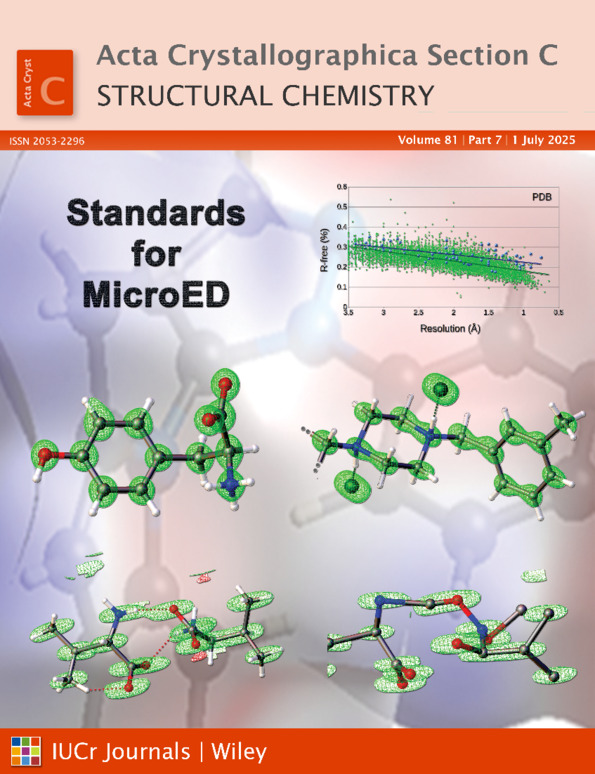Supramolecular architectures in the crystal structures of six chromone derivatives: Hirshfeld surface and energy framework analyses
Abstract
The synthesis and characterization of six novel chromone hydrazide derivatives are described, namely, (E)-2,4-dichloro-N′-[(4-oxo-4H-chromen-3-yl)methylidene]benzohydrazide monohydrate, C17H10Cl2N2O3·H2O, (I), (E)-4-chloro-N′-[(4-oxo-4H-chromen-3-yl)methylidene]benzohydrazide hemihydrate, C17H11ClN2O3·0.5H2O, (II), (E)-2-methoxy-N′-[(4-oxo-4H-chromen-3-yl)methylidene]benzohydrazide monohydrate, C18H14N2O4·H2O, (III), tert-butyl (E)-2-[(4-oxo-4H-chromen-3-yl)methylidene]hydrazine-1-carboxylate, C15H16N2O4, (IV), tert-butyl (E)-2-[(2-amino-4-oxo-4H-chromen-3-yl)methylidene]hydrazine-1-carboxylate, C15H17N3O4, (V), and (E)-N′-[(4-oxo-4H-chromen-3-yl)methylidene]acetohydrazide, C12H10N2O3, (VI). Compounds (I)–(III) crystallize as hydrates, with water molecules playing a significant role in the hydrogen-bonding networks. The studied compounds exhibit diverse supramolecular architectures driven by various types of hydrogen bonds (N—H…O, O—H…O and O—H…N), weak C—H…O contacts and aromatic π–π stacking interactions. Energy frameworks, illustrating the distribution of the total energy and dispersive energy contributions, predominantly reveal di-periodic patterns that reflect the layered crystal structures. However, in compounds (I) and (III), tri-periodic motifs appear, primarily influenced by dispersive interactions.




